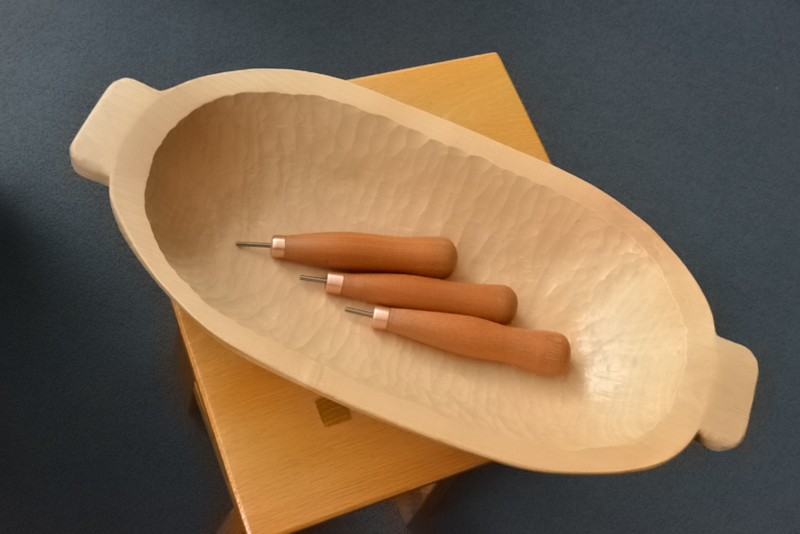1) Burnishing rod – do I really need one? I have for a while now managed to get good results from my scrapers (recycled saw blades) using Grandads system – file – oil stone then, the haft of a quality screwdriver. But I note some guru’s touting ‘burnishing rods’ as the only way to get a good edge on a scraper. Happy to toddle off and buy one – which one is another question – but I wonder; is this a ‘nice to have’ or a must have item?
2) I have an old-ish Stanley #4 (circa 1938) which works beautifully except for one small ‘kink’ which I cannot seem to correct; maybe one of the wise owls can help. I have carefully ‘fettled’ this plane; it is straight, true, tuned and in good, if not showroom condition. I can work with it all day and it is a pleasure until for no apparent reason – the set changes. Suddenly a great scrape appears on one side of the work-piece or ‘tuther. All I do is grab the blade end, set it back to ‘square’, the set lever re centres and with a small depth adjustment – work resumes as normal. The blade is ‘flat’, the frog is ‘flat’, the seats are flat, I cannot fault any part of this plane; yet once in a while it goes off the reservation. It does this with and without a new lever cap; it is one of seven working planes which I have fettled; they all work just fine. But this little trick of my second oldest drives me nuts.
Any advice welcome to my non essential questions. Cheers
2) I have an old-ish Stanley #4 (circa 1938) which works beautifully except for one small ‘kink’ which I cannot seem to correct; maybe one of the wise owls can help. I have carefully ‘fettled’ this plane; it is straight, true, tuned and in good, if not showroom condition. I can work with it all day and it is a pleasure until for no apparent reason – the set changes. Suddenly a great scrape appears on one side of the work-piece or ‘tuther. All I do is grab the blade end, set it back to ‘square’, the set lever re centres and with a small depth adjustment – work resumes as normal. The blade is ‘flat’, the frog is ‘flat’, the seats are flat, I cannot fault any part of this plane; yet once in a while it goes off the reservation. It does this with and without a new lever cap; it is one of seven working planes which I have fettled; they all work just fine. But this little trick of my second oldest drives me nuts.
Any advice welcome to my non essential questions. Cheers


































